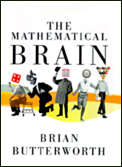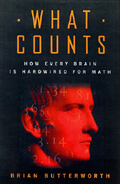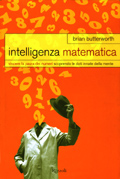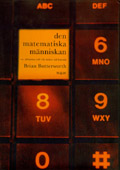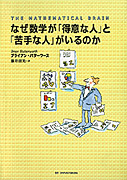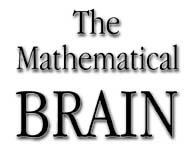How could I pass up the chance to witness the most revealing pictures ever taken of Carol Vorderman ? The star of Channel 4's Countdown has always had a love of numbers and has been an enthusiastic backer of high-profile efforts to boost numeracy, from workbooks for parents and children to meetings to lobby the Prime Minister. Now I was to join a select group of neuroscientists who want to lay bare her mind, to riffle through the neurons of one of the few television stars more famous for her brains than her face. With luck, we would discover why she has a head for figures.
For a lecture series run by The Telegraph and the healthcare company Novartis, and funded by the National Endowment for Science, Technology and the Arts (Nesta) , Vorderman - a former Nesta trustee - had agreed to allow Dr Mark Lythgoe and his colleagues at University College London to reveal the inner workings of her brain.
And the reward for Britain's highest-paid female television presenter? A mug that invites others to have their brains scanned at UCL, a bouquet and an opportunity to help publicise the Visions of Science Photographic Awards, which provide stunning images to accompany Dr Lythgoe's forthcoming lectures on whether mathematicians are born or made.
Vorderman first showed an interest in numbers when she was three, during her impoverished upbringing in Wales. Her talents were recognised by her "superb" maths teacher, Mr Parry, who wrote that "she has a mastery of computation which should prove profitable".
She was the first woman to appear on Channel 4 when it launched, and has been there ever since, performing mental arithmetic as her party trick. Though she protests that she is no maths prodigy, she is dubbed "telly brainbox" by the tabloids and has such a high success rate that when she does fluff her maths (for instance, how to calculate 959 using 75,2,9,1,10 and 4) she makes headlines.
Because the Countdown format has remained the same for two decades, she gets letters from stroke victims and patients who measure their recovery by their ability to solve the programme's puzzles over the course of their rehabilitation. By the same means, she has found that age and childbirth have slowed down her own maths speed.
To find out more about her brain, she became the first celebrity client of UCL's Institute of Cognitive Neuro-science last week for a series of scans under the guidance of Prof Brian Butterworth and Dr Lythgoe.
In the basement of the Wellcome Department of Imaging Neuroscience , Vorderman was trundled into the magnetic resonance imaging (MRI) scanner, understandably anxious about what the scientists might find. A powerful magnetic field (30,000 times that of the Earth's magnetic field) was generated by the scanner, lining up the spins of atomic nuclei in her brain. The striking contrast in the final image was obtained by detecting radio signals emitted by spinning nuclei.
The first "functional" MRI experiment, undertaken by Dr Fulvia Castelli, looked at brain activity by detecting tiny changes in blood oxygenation in her parietal sulcu s when she was asked to think of the number and quantity of something, say the number of cubes of sugar versus how much sugar there is.
So as not to clutter the scan with activity in her language areas (the left half of her brain), Vorderman was not presented with numbers but collections of red and green rectangles and asked to judge their overall number and length. A second task saw her attempting to judge whether two arrangements of rectangles of different shades were the same, an idealised version of placing a series of numbers in sequence. "Of all the tests, I found this the most difficult," she said. "The images were on the screen for such a short time it was impossible to analyse them."
"Carol had probably never encountered this test, which is designed to bypass all learning and education to show a core cognitive system, one we possibly share with animals," said Dr Castelli.
The second experiment, organised by Joey Tang, examined another basic skill - interpreting numerals. Vorderman smiled with relief because the experiment used numbers again, not patterns.
She was presented with a quick succession of number pairs and then asked to say which was numerically the biggest. The problem was that the physical size of the numerals also varied, so that a big 2 could be shown with a small 9. This "stroop" experiment creates conflict in the mind. Because of the time pressure, Vorderman cursed when she was tricked into saying seven was higher than eight. "I knew that I had pressed the wrong button, but it was too late," she said. Yet, Ms Tang was impressed by her performance.
The neuroscientists wanted to explore whether Vorderman uses the same trick to boost her mathematical dexterity as a well known prodigious calculator, Rüdiger Gamm , who has been shown to use long-term memory to boost his skills. Dr Lythgoe said that there was anecdotal evidence that she may do the same, since she normally does an hour of calculations before each Countdown and this warm-up may help her draw on different brain regions.
A final experiment was conducted by Dr Chloe Hutton, winner of a Wellcome Trust biomedical image award. Using a novel processing technique, Dr Hutton could measure the thickness of Voderman's grey matter, a large folded sheet mainly consisting of nerve cells surrounding the white matter that contains the pathways between the cells.
Though still being tested, this method is potentially revolutionary since it could show how grey matter is being beefed up in regions of the brain that are in constant use. Her method could also back other studies that suggest that, though women's brains are, on average, smaller, they may pack more nerve cells into the prefrontal lobes, which regulate language, judgment and future actions.
It was hard to know what Vorderman would make of Dr Hutton's final 3D rendering of her head, shorn of hair, with its top flipped open. Using smart software, her brain could also be inflated - removing its wrinkles - to show the full extent of activity that would normally be concealed deep within the convoluted surface, or cortex.
As the scanner buzzed on and off, reflecting on how the magnetic field was being tweaked to acquire a series of 1mm-thick brain slices, it highlighted the density and environment of protons in Voderman's brain, the tell-tale clue to whether it was looking at white matter or grey. After two hours, the scanner almost lulled Vorderman to sleep. When she stirred, she joined us in the control room to spend time moving a cursor over a computer display, slicing her brain in various ways, checking to see if there was any difference on the side where she uses her mobile phone (there wasn't).
"This is fascinating," was her reaction to the first voyage through her cerebellum. "For the first time, I can literally go in one ear and out the other."
For an average person, the thin rind of the cortex, the home of consciousness, is 2 sq ft to 2.5 sq ft. In the case of Vorderman, initial results suggest her brain surface is 2.1 sq ft.
When I pointed out the huge size of her tongue (actually quite normally proportioned), I was subject to a quick slap and smart riposte about all the practice it gets. There was similar banter when Dr Lythgoe, after inspecting a slice through her face, teased her about having a nose job.
Vorderman was, however, reassured to be told there were no signs of tumours or strokes. Prof Butterworth marvelled at the size of her hippocampus , a region involved in memory and navigation. And Dr Hugo Critchley, a UCL researcher who has had his own brain immortalised as a plastic model, praised her "healthy brain with no gaps". Like other scans, the anonymised details of her brain will be passed to a database for further study.
Voderman's scans will also star in a forthcoming lecture series, an extension of the Visions of Science Photographic Awards, backed by The Telegraph, Novartis and Nesta. Drummond Paris, CEO of Novartis Pharmaceuticals UK Ltd, said: "Some of us look at numbers and see patterns, but for others they make no sense at all. Dr Lythgoe's lecture will give us a fascinating insight into why this might be, through images, psychology and neuroscience."
The first talk takes place in the Science Museum, London, at 7pm on Oct 23 and, next year, at the At-Bristol Museum , Bristol, on Jan 29 and Glasgow Science Centre on March 18. The tickets, £5, can be booked via Ticketselect. Call 0870 890 5501 or visit www.wayahead.com.
Accompanying the series will be the Visions of Science photographic exhibition, which begins a nationwide tour at the Science Museum, London, from Oct 13 until Nov 29.
See Also
